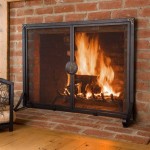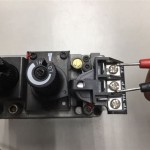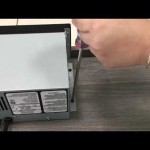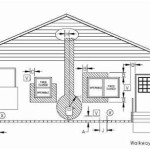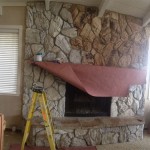Gas Logs Fireplace: An Overview
Gas logs fireplaces offer a convenient and aesthetically pleasing alternative to traditional wood-burning fireplaces. They provide the ambiance of a fire without the hassle of sourcing, storing, and burning wood. Understanding the different aspects of gas logs fireplaces, from their types and installation to maintenance and safety considerations, is crucial for homeowners considering this option.
This article provides a comprehensive overview of gas logs fireplaces, covering key aspects to inform potential buyers and users. It aims to present information in a clear, informative, and unbiased manner, enabling readers to make informed decisions regarding their fireplace options.
Types of Gas Logs
Gas logs are not a one-size-fits-all product. Different types cater to varying preferences and fireplace setups. The primary distinction lies between vented and vent-free (or ventless) gas logs, each with its own set of advantages and disadvantages.
Vented Gas Logs: These logs are designed to be used in a fully functioning fireplace with a working chimney. They produce a more realistic flame appearance, often larger and more dynamic, resembling a natural wood-burning fire. However, this realism comes at the cost of efficiency. Vented gas logs release a significant amount of heat up the chimney, making them primarily decorative rather than a significant heat source. They require a properly sized and functioning chimney to safely vent combustion byproducts like carbon monoxide. Operating vented gas logs in a fireplace with a closed damper or a blocked chimney is extremely dangerous and can lead to carbon monoxide poisoning.
Vented gas logs are typically made of ceramic or refractory cement and are designed to withstand high temperatures. They are often intricately detailed to mimic the appearance of various wood species, adding to their aesthetic appeal. Installation usually involves placing the logs according to the manufacturer's instructions on a grate inside the existing fireplace. A gas line connection is then established, either through a flexible connector or a more permanent hard-piped connection. Professional installation is highly recommended to ensure safe and proper operation.
Vent-Free Gas Logs: Also known as ventless gas logs, these are designed to operate without a functioning chimney. They burn gas more efficiently, converting nearly all of the fuel into heat, making them a more effective heating source compared to vented logs. Vent-free logs are equipped with an Oxygen Depletion Sensor (ODS) which automatically shuts off the gas supply if the oxygen level in the room drops to a dangerous level. This is a crucial safety feature designed to prevent carbon monoxide poisoning.
While vent-free gas logs offer increased heating efficiency, they produce a less realistic flame appearance compared to vented logs. They also release small amounts of water vapor and other byproducts into the room. For this reason, it is crucial to ensure adequate ventilation in the room where vent-free logs are used. Regularly opening windows or using a ceiling fan can help to circulate air and prevent the buildup of moisture or pollutants. Furthermore, it is essential to follow the manufacturer's instructions regarding room size requirements and ventilation guidelines.
Vent-free gas logs are also typically made of ceramic or refractory cement and come in various styles to mimic different wood types. Installation is similar to vented logs, involving placement on a grate and connection to a gas supply. Due to the potential safety concerns associated with vent-free logs, professional installation and regular maintenance are strongly advised.
Beyond vented and vent-free, there are also options like see-through or peninsula gas logs designed for fireplaces that open on multiple sides. These offer a unique visual appeal, allowing the fire to be enjoyed from different areas of the room. These types are generally vented and require specialized installation.
Installation Considerations
Proper installation is paramount for the safe and efficient operation of a gas logs fireplace. Whether opting for vented or vent-free logs, engaging a qualified professional is a prudent investment. Incorrect installation can lead to gas leaks, carbon monoxide poisoning, and potential fire hazards. The following aspects are critical during the installation process:
Gas Line Connection: A qualified gas technician must handle the gas line connection. This involves ensuring the gas line is properly sized to meet the demands of the gas logs and that all connections are leak-proof. Existing gas lines may need to be upgraded to accommodate the increased gas flow required by the fireplace. Using the correct type of piping and fittings is essential to prevent leaks and ensure safe operation. A pressure test should be performed after the connection is complete to verify the integrity of the gas line.
Log Placement: The placement of the gas logs is critical for proper flame appearance and safe operation. The logs should be arranged according to the manufacturer's instructions, ensuring that they do not obstruct the burner or interfere with the pilot light. Incorrect log placement can lead to incomplete combustion, resulting in the production of carbon monoxide. The log arrangement also impacts the aesthetic appeal of the fire, affecting the flame pattern and overall visual impression.
Ventilation: For vented gas logs, ensuring a properly functioning chimney is crucial. The chimney should be inspected and cleaned regularly to remove any obstructions that could impede the flow of combustion gases. For vent-free gas logs, adequate ventilation in the room is essential to prevent the buildup of moisture and other byproducts. This may involve opening windows, using a ceiling fan, or installing a dedicated ventilation system.
Pilot Light and Ignition System: The pilot light is a small flame that ignites the main burner when the fireplace is turned on. A properly functioning pilot light is essential for reliable operation. The ignition system, whether manual or electronic, should be tested to ensure it is working correctly. If the pilot light is difficult to light or constantly goes out, it may indicate a problem with the gas supply or the ignition system.
Safety Features: Modern gas logs fireplaces are equipped with various safety features, such as Oxygen Depletion Sensors (ODS) and automatic shut-off valves. These features are designed to prevent carbon monoxide poisoning and other hazards. It is crucial to understand how these safety features work and to test them regularly to ensure they are functioning correctly.
Local Codes and Regulations: Gas logs fireplace installations are subject to local building codes and regulations. It is essential to obtain the necessary permits and to comply with all relevant requirements. Failure to comply with local codes can result in fines and other penalties.
Maintenance and Safety
Regular maintenance is essential for ensuring the safe and efficient operation of a gas logs fireplace. Neglecting maintenance can lead to gas leaks, carbon monoxide poisoning, and other hazards. The following maintenance tasks should be performed regularly:
Cleaning: The gas logs and burner assembly should be cleaned regularly to remove dust, debris, and soot. A soft brush or vacuum cleaner can be used to clean the logs. The burner assembly should be cleaned according to the manufacturer's instructions. A clogged burner can lead to incomplete combustion and the production of carbon monoxide.
Inspection: The gas logs, burner assembly, gas line, and chimney (for vented logs) should be inspected regularly for signs of damage or wear. Look for cracks in the logs, corrosion on the burner, leaks in the gas line, and obstructions in the chimney. Any problems should be addressed promptly by a qualified technician.
Pilot Light Maintenance: The pilot light should be inspected regularly to ensure it is burning cleanly and efficiently. A yellow or flickering pilot light may indicate a problem with the gas supply or the burner assembly. The pilot light assembly can be cleaned with a small brush or a needle to remove any debris that may be obstructing the gas flow.
Carbon Monoxide Detectors: Carbon monoxide detectors should be installed in the home, especially near bedrooms and living areas. These detectors provide an early warning in the event of carbon monoxide buildup. The detectors should be tested regularly and the batteries should be replaced as needed.
Professional Servicing: A qualified gas technician should service the gas logs fireplace at least once a year. The technician can inspect the system for any potential problems and perform necessary maintenance tasks. Professional servicing can help to ensure the safe and efficient operation of the fireplace.
Recognizing Potential Problems: Become familiar with the signs of potential problems with the gas logs fireplace. These signs may include a gas odor, a yellow or flickering flame, soot buildup on the logs or walls, and headaches or dizziness. If any of these signs are present, turn off the fireplace immediately and contact a qualified technician.
By understanding the different types of gas logs, proper installation procedures, and essential maintenance practices, homeowners can enjoy the benefits of a gas logs fireplace while ensuring their safety and well-being. Regular maintenance, professional servicing, and adherence to safety guidelines are crucial for preventing accidents and maintaining the longevity of the fireplace system.
Furthermore, it is important to regularly review the manufacturer’s instructions for specific models. These instructions contain detailed information about proper operation, maintenance, and troubleshooting, which can be invaluable for ensuring the safe and efficient use of the gas logs fireplace.

Napoleon Gl18e Vented Gas Log Set 18 Inch

Vented Gas Logs Heater Or Decorative Bart Fireside

Pleasant Hearth 18 Dual Fuel Wildwood Vent Free Gas Log Set 30 000 Bt

Napoleon Gl28 Reversible Vented Gas Log Set 28 Inch

Gas Log Set S Installation Vented Logs For Your Fireplace

Vented Gas Logs Natural And Propane

American Gas Log Dundee Oak 30 In Vented Natural Fireplace Set With Complete Kit Manual Match Lit Do30hdmtch The Home Depot

How Do Gas Logs Work Hocon

Procom 18 In Vented Natural Gas Fireplace Log Set 210016 The Home Depot

Napoleon Reversible Vented Gas Log Set Logs Stove Hearth Patio
Related Posts

